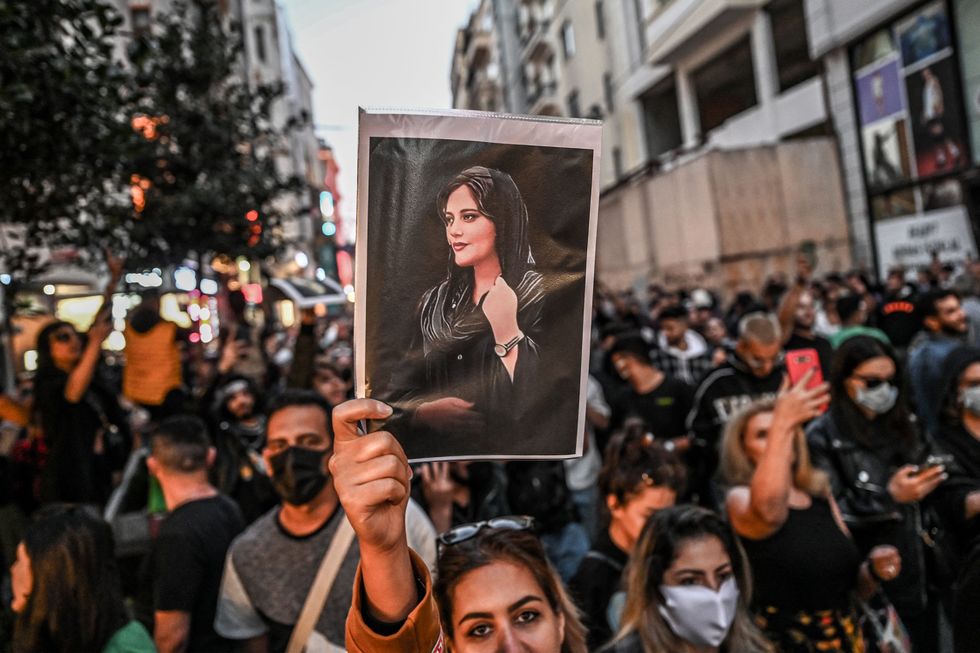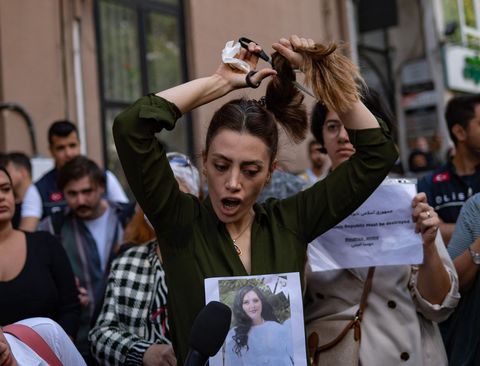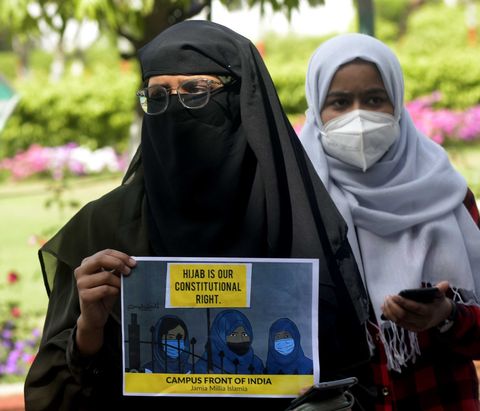Mahsa Amini Was Arrested For ‘Bad Hijab.’ But the Only ‘Bad Hijab’ Is a Forced One
Recently, unprecedented images have emerged from the streets of Iran: defiant-eyed women ceremoniously cutting their locks in public; headscarves burning on the streets amid plumes of smoke; oceans of nameless demonstrators shouting together in a unified chant—all protesting against forced hijab laws, now behind the veil of government-imposed Internet shutdowns.
Almost 20 years ago, during the height of the War on Terror, a Muslim schoolgirl in France took a similar action and publicly shaved her head in front of an audience of protesters, international media, and press cameras, making global headlines in a pre-social media era.
Except, she was protesting for her right to wear it.
This is no contradiction. Muslim women across the East and West have been fighting for the same thing for decades: the right to choose.
Mahsa Amini, whose Kurdish first name is Jhina, sparked a national outcry when the 22-year-old died in police custody in Tehran on Sept. 16. Amini was arrested and beaten by Iran’s “morality police”—the government agency used to enforce mandatory hijab rules—for “bad hijab,” or what they deemed to be an inappropriate form of dress. While the “morality police” asserts itself as a spiritual authority, the reality is that it’s a government invention with no theological existence in Islam that manipulates religion to assert control over people. In Iran, the morality police use hijab as a tool to essentially diminish Iranian women from the public space, intimidating women across the country to stay home.
While commonly equated to the headscarf, hijab is the universal concept of modesty applied to both men and women’s Islamic lifestyle. While the headscarf is a physical practice of hijab, it is intended to apply to all facets of one’s life—from your attitude to your actions to even your way of thinking—with the purpose of promoting compassion and sanctifying personal autonomy. For example, the first requirement of physical hijab is the Hadith of Prophet Muhammad, peace be upon him, to “lower your gaze”—placing the onus on one’s personal actions first and foremost, rather than blaming or interfering with another person’s hijab. At its spiritual foundation, the core of hijab is personal choice: the only “good hijab” is one with intention; the only “bad hijab” is one that’s forced.
That’s why at the same time as Iranian women are fighting with their lives for their right to take their headscarves off, Indian women are fighting for their right to keep them on. This March, in the face of increasing Hindu nationalism and widespread anti-Muslim violence, an Indian court upheld a policy allowing schools in the state of Karnataka to ban the hijab, provoking attacks targeting Indian Muslim women and girls. In 2021, Muslim women launched the viral social media hashtag #HandsOffMyHijab after French officials voted to ban young Muslim women and girls from wearing the hijab in public.
The truth is that laws forcing Muslim women to wear headscarves or take them off represent two sides of the same coin: controlling Muslim women’s right to choose. Hijab laws have nothing to do with religion or secularism. At best, they are a form of state-sanctioned sexual harassment; at worst, they represent the systemic subjugation of Muslim women, no matter what society they exist in.
Mahsa Amini and countless others have lost their lives over Iran’s hijab laws; countless more are risking their lives by hitting the streets and expressing themselves on social media. But their fight for freedom is not an exception. It’s time for us to have nuanced conversations around hijab and the way it has been used as a tool and a litmus test for how we view Muslim women. The worst thing that can happen is for the world to respond to Iranian women’s bravery by using it to oppress Muslim women elsewhere in the world under the guise of liberation.
As the United States grapples with its own war over women’s bodies in the form of abortion rights, it’s clear that the desire to control women transcends religion, political ideology and even cultural spheres. Now, Iranian women are beating the drum, calling on women all over the world to claim a revolutionary truth: Our bodies are on our terms.
Amani is a Muslim-American activist, author, and founder of Muslim Girl, the award-winning media platform for Muslim women’s voices in America.



